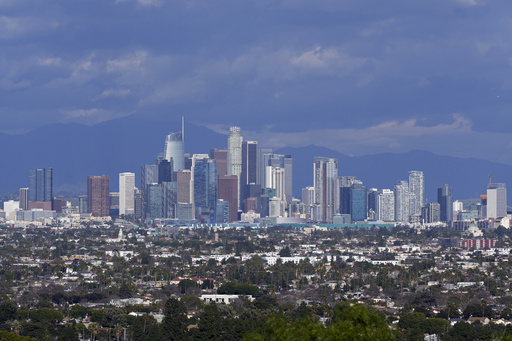SACRAMENTO, Calif. — As of 2024, California’s population has risen above 39.5 million, signifying two consecutive years of growth after experiencing declines during the COVID-19 pandemic.
The Department of Finance reported on Thursday that the population increased by approximately 1%, adding 108,000 individuals as compared to 2023. This growth can be attributed to a higher number of births than deaths coupled with an increase in the elderly population, particularly those aged 65 and over. Furthermore, improved data regarding legal immigration has helped account for the demographic rise as more people from various countries settled in the state.
California is home to approximately one in every nine Americans.
The governor highlighted these population gains as evidence of the state’s robust economy, currently one of the largest globally. As of last week, California’s economic size surpassed Japan’s, ranking only behind the entire U.S., China, and Germany. “The Golden State is attracting individuals from across the country and the world seeking the California Dream,” noted the governor. “Our diverse regions are thriving, fortifying local communities, and promoting the state’s prosperous future.”
However, critics have previously linked California’s population declines to enduring issues such as housing unaffordability, escalating living costs, and widespread homelessness. Although the state is infamous for some of the nation’s steepest housing, gas, and utility prices, this resurgence appears modest in the eyes of some skeptics.
Republican voices have highlighted past trends of Californians moving to states like Texas, which saw the largest interstate migration in the country. They argue that the core causes of prior demographic shifts remain unresolved. “Despite a short-lived rise, Californians continue to face high costs and problematic governance,” asserted Assembly Republican Leader James Gallagher. “If the Governor thinks a single-year rise indicates success, he overlooks the challenges many families face daily.”
Eric McGhee, a policy figure at the nonpartisan Public Policy Institute of California, acknowledged that the previous declining phase was unprecedented since the state had never experienced such a downturn before. “Historically, we’ve been one of the fastest-growing states, so recording a population loss was certainly anomalous,” McGhee mentioned. Although recent growth is promising, he described it as relatively modest.
The state has revised its estimates for legal immigration between 2021 and 2024, adding around 277,000 individuals thanks to more accurate data. The total number of legal immigrants is now assessed to be about 655,000 for that period.
Population growth was noted in seven out of California’s 10 largest cities in 2024, with Bakersfield and San Diego witnessing increases surpassing 1%, elevating their populations to approximately 419,000 and 1.4 million, respectively. Conversely, cities like San Francisco, San Jose, and Anaheim experienced minor declines of less than 0.5%.
Nine of the 10 largest counties observed population upticks, with Los Angeles County alone gaining 28,000 residents since 2023. However, in Contra Costa County, located in the San Francisco Bay Area, the number of residents decreased marginally by two dozen individuals.
Mono County, a smaller region on the California-Nevada border near Yosemite National Park, saw its growth rate decrease by around 1.6%.



